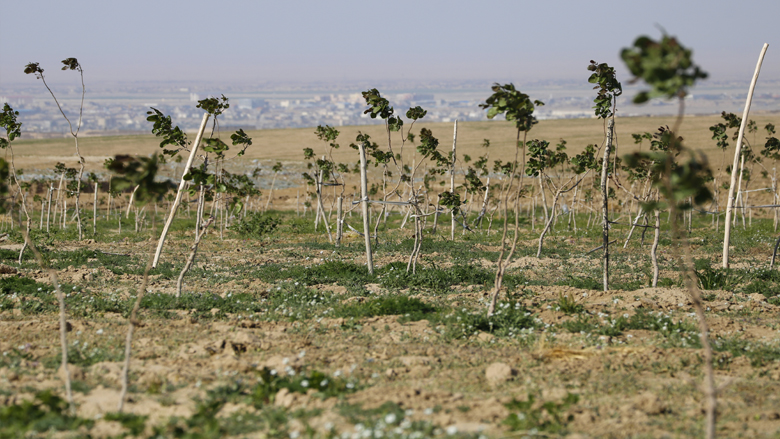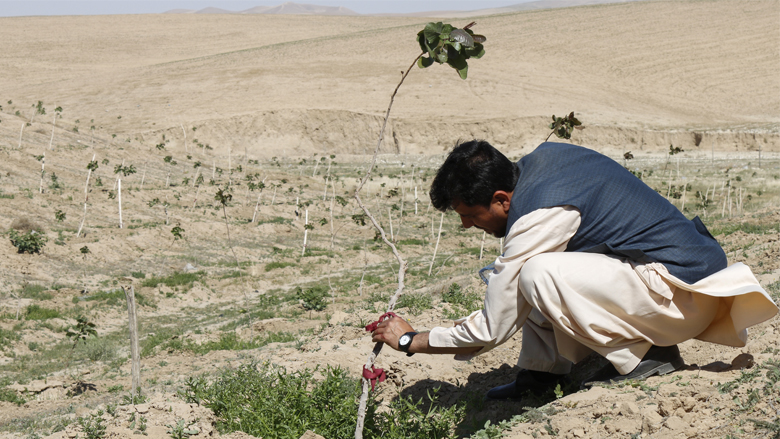NAHR-E-SHAHI DISTRICT, Balkh Province – Nader had no idea that the arid land he owned with his business partner, Najibullah could one day turn into a source of income.
in 2014 by establishing a 25-jerib (5 hectares) orchard, growing peaches, apricots, and grapes, with support from the National Horticulture and Livestock Project (NHLP).
“,” says Nader, who was encouraged by the modern horticultural system the project promoted and the quality yields from it.
Inspired by their initial experience and NHLP plantation campaigns, the partners decided to invest in turning their arid land into a pistachio grove. They established a 60-jerib (12 hectares) grove in 2016 and another of over 60 jeribs in 2018 with pistachio trees they received from NHLP. The groves are south of the Balkh provincial center, Mazar-e-Sharif. “We hope to harvest them in six to seven years,” Nader says.
Pistachio trees are particularly suitable to growing on drylands as they thrive under harsh conditions and are resistant to drought, requiring only some irrigation. Nader is visiting the new grove today to ensure that the trees are irrigated as recommended by NHLP technicians.
In addition to the pistachio trees, NHLP has provided seven water tanks for irrigation to the groves. . Much of their investment has gone into bringing irrigation water to the farm and implementing a drip irrigation system, whereby water is slowly delivered to the roots of the plants.
NHLP has also provided horticulture training on proper irrigation, seasonal diseases, and tree pruning. “We do all our activities here in close consultation with NHLP. When we need help, they always come here and help us. People are also saying that our horticulture system is efficient,” says Nader, after discussing with an NHLP pistachio extension worker when they should graft their trees.
Safa, a worker for Balkh Province, says that Nader’s pistachio groves are growing satisfactorily and that they could expect to harvest one ton of pistachios per jerib. “We work on pistachio groves across all 14 districts of Balkh Province and everywhere we have good examples. Overall, we have a positive result,” he says.



